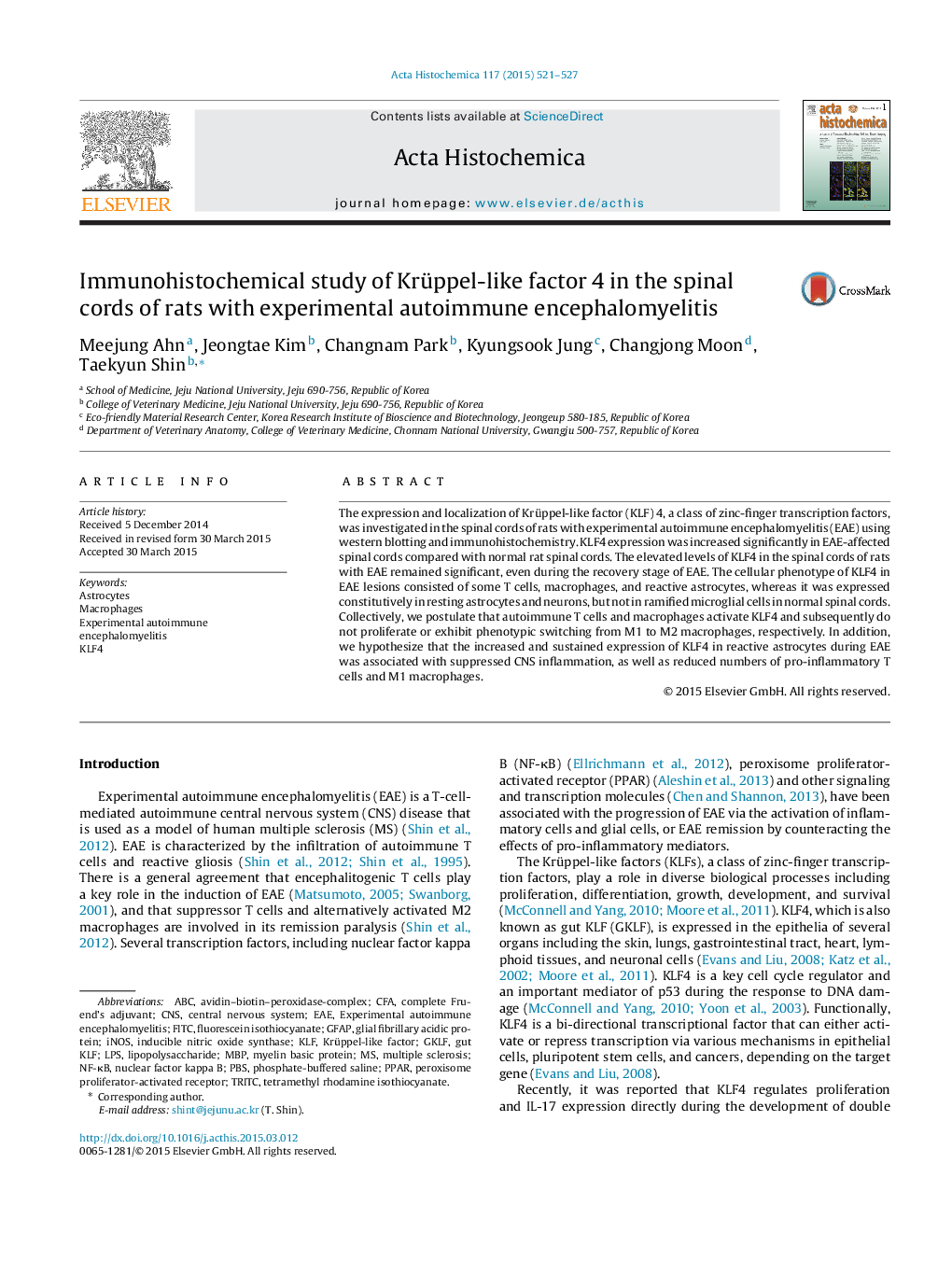| Article ID | Journal | Published Year | Pages | File Type |
|---|---|---|---|---|
| 1923514 | Acta Histochemica | 2015 | 7 Pages |
Abstract
The expression and localization of Krüppel-like factor (KLF) 4, a class of zinc-finger transcription factors, was investigated in the spinal cords of rats with experimental autoimmune encephalomyelitis (EAE) using western blotting and immunohistochemistry. KLF4 expression was increased significantly in EAE-affected spinal cords compared with normal rat spinal cords. The elevated levels of KLF4 in the spinal cords of rats with EAE remained significant, even during the recovery stage of EAE. The cellular phenotype of KLF4 in EAE lesions consisted of some T cells, macrophages, and reactive astrocytes, whereas it was expressed constitutively in resting astrocytes and neurons, but not in ramified microglial cells in normal spinal cords. Collectively, we postulate that autoimmune T cells and macrophages activate KLF4 and subsequently do not proliferate or exhibit phenotypic switching from M1 to M2 macrophages, respectively. In addition, we hypothesize that the increased and sustained expression of KLF4 in reactive astrocytes during EAE was associated with suppressed CNS inflammation, as well as reduced numbers of pro-inflammatory T cells and M1 macrophages.
Keywords
TRITCEAEPPARiNOSABCMBPGFAPFITCKLFLPSPBSCFANF-κBGKLFKLF4tetramethyl rhodamine isothiocyanateAstrocytesexperimental autoimmune encephalomyelitisCNSinducible nitric oxide synthasecentral nervous systemKrüppel-like factornuclear factor kappa Bfluorescein isothiocyanatelipopolysaccharideMacrophagesPhosphate-buffered salineMultiple sclerosisGlial fibrillary acidic proteinMyelin basic proteinperoxisome proliferator-activated receptor
Related Topics
Life Sciences
Biochemistry, Genetics and Molecular Biology
Biochemistry
Authors
Meejung Ahn, Jeongtae Kim, Changnam Park, Kyungsook Jung, Changjong Moon, Taekyun Shin,
